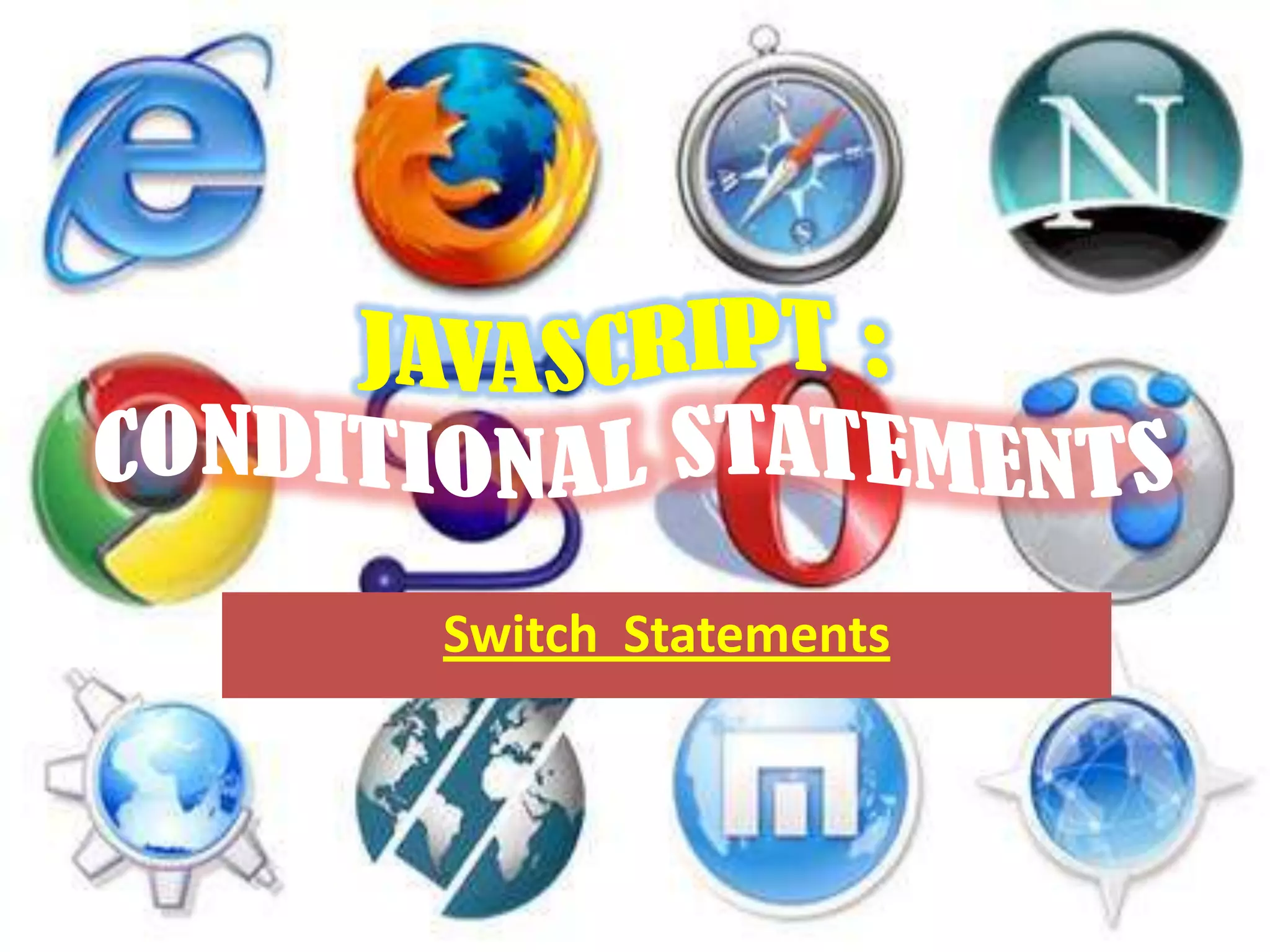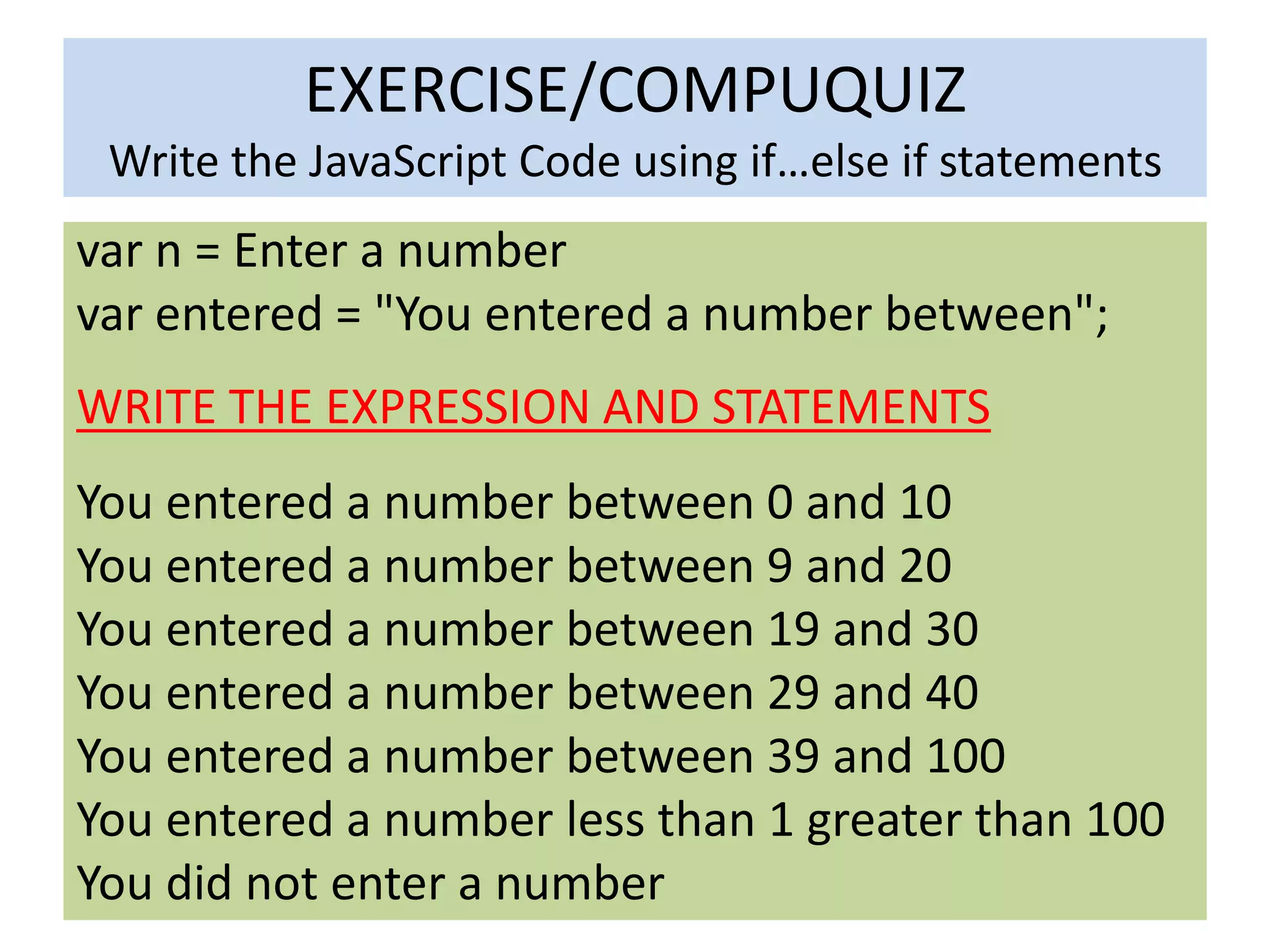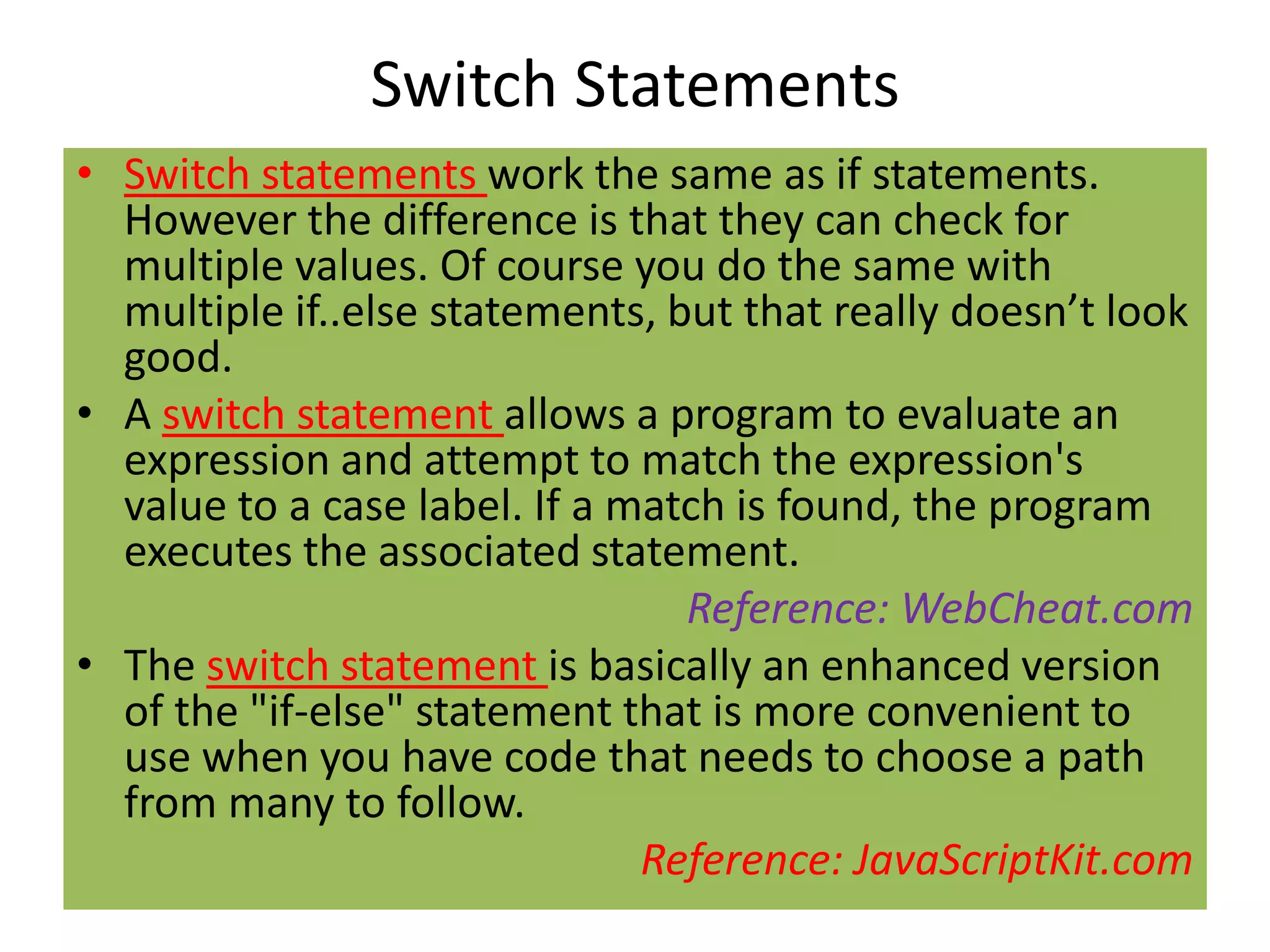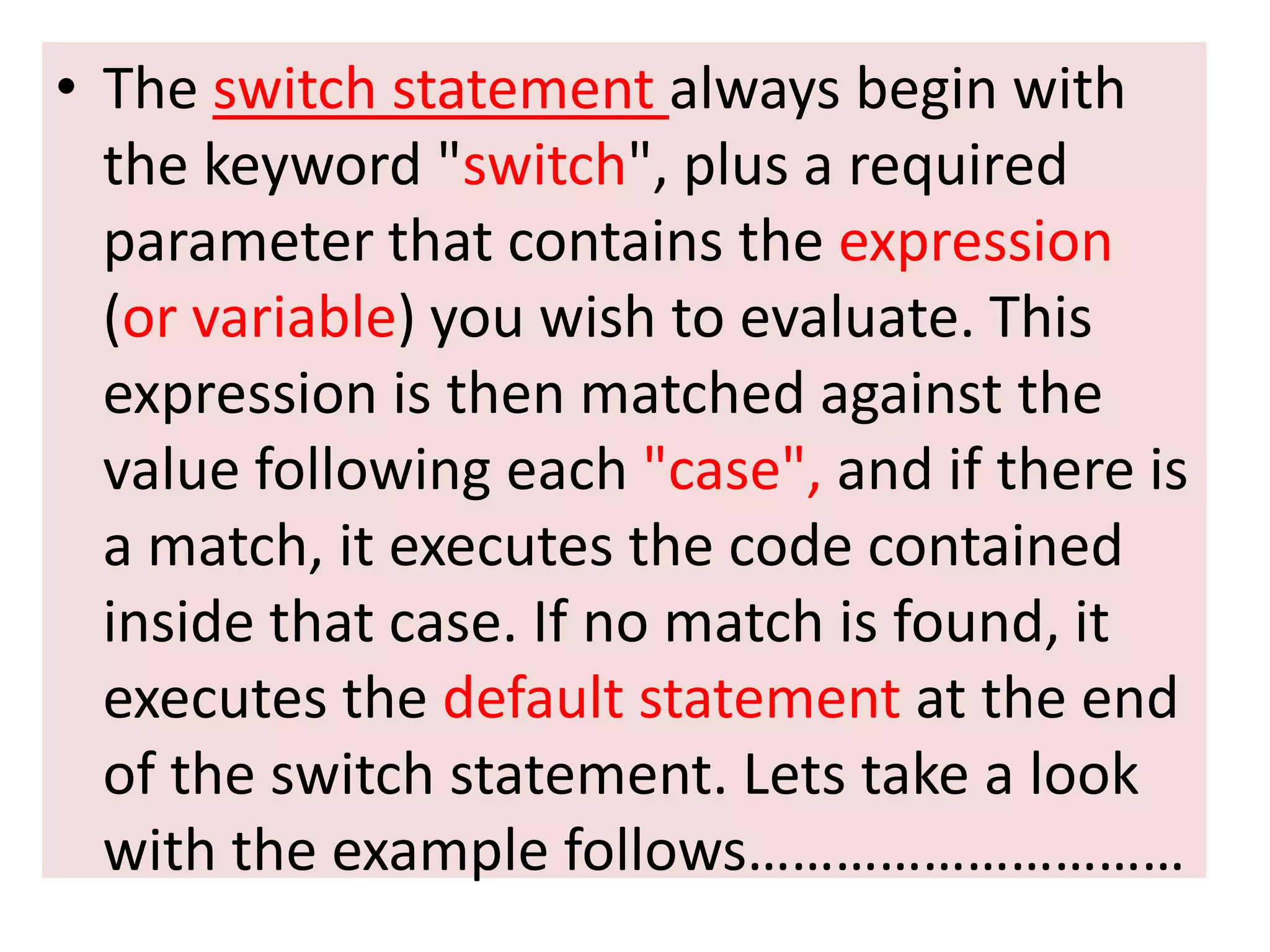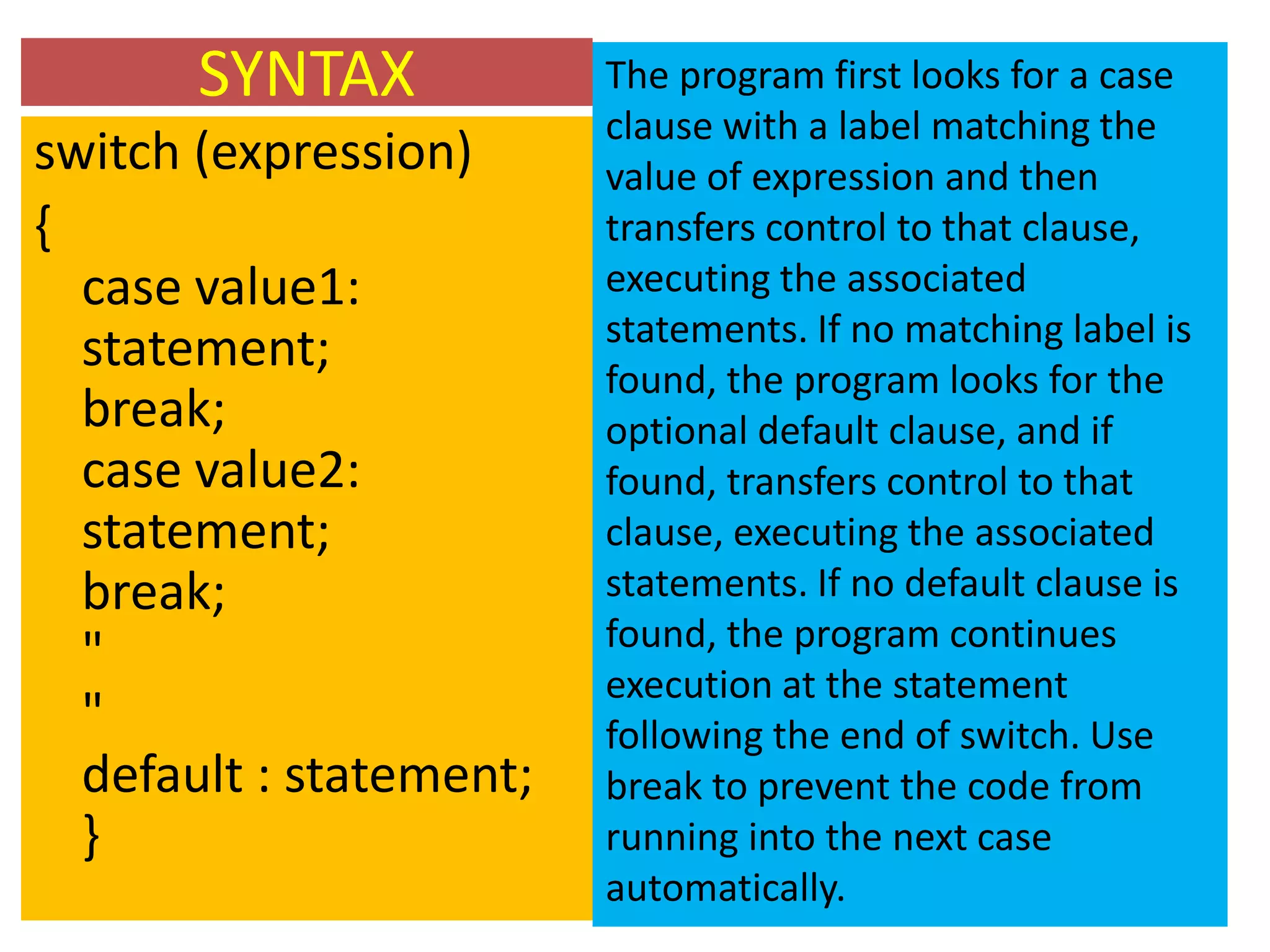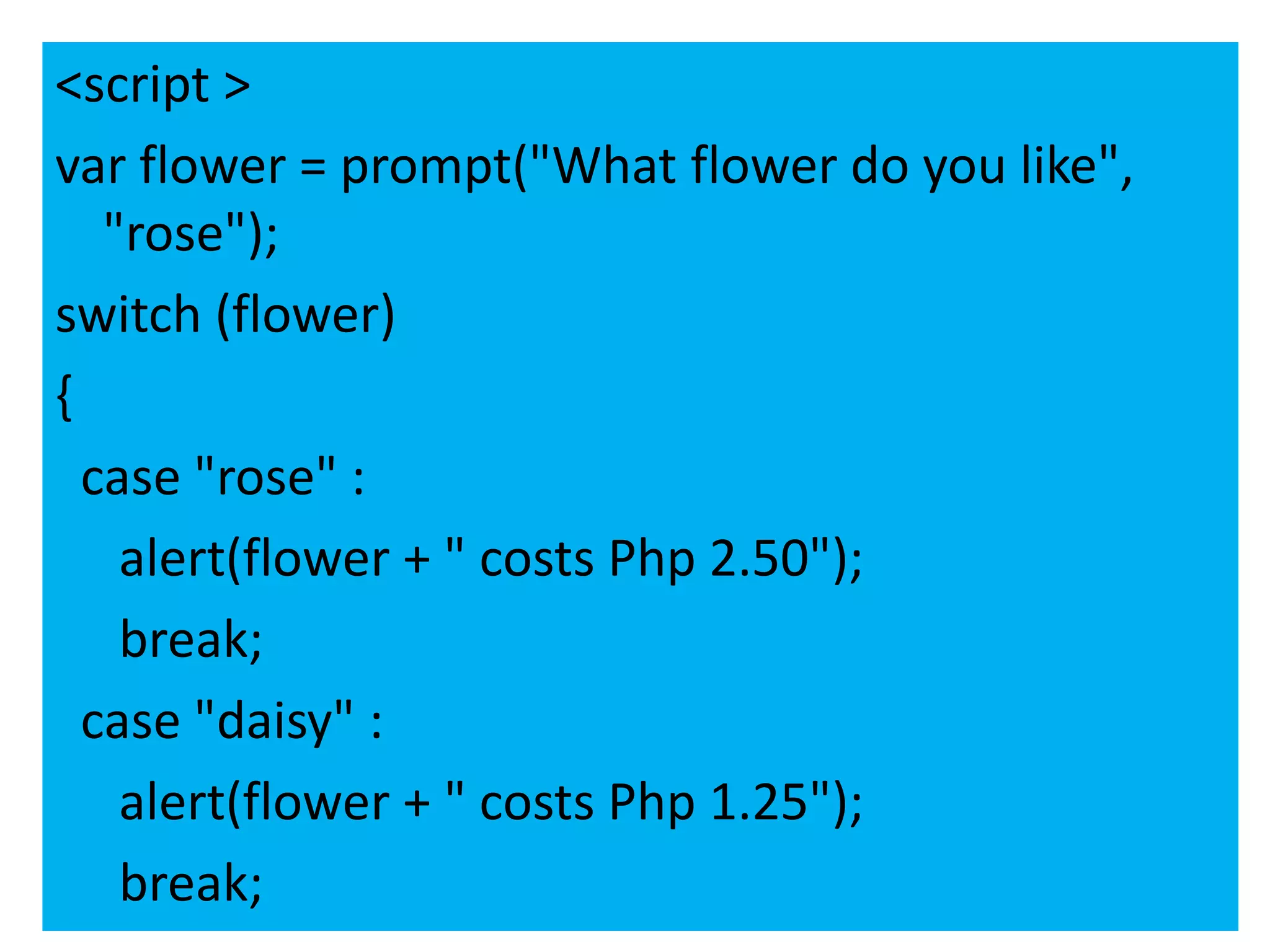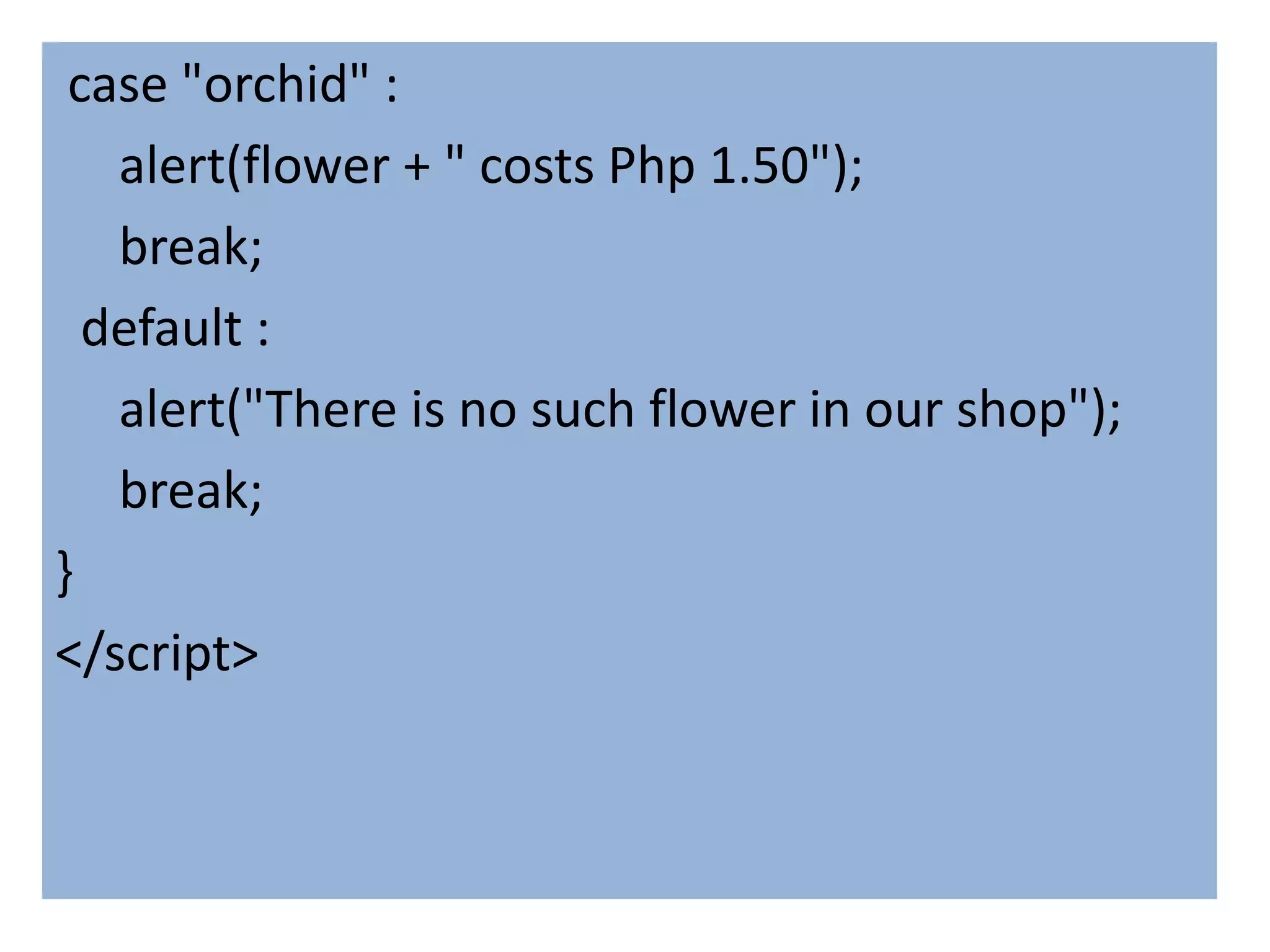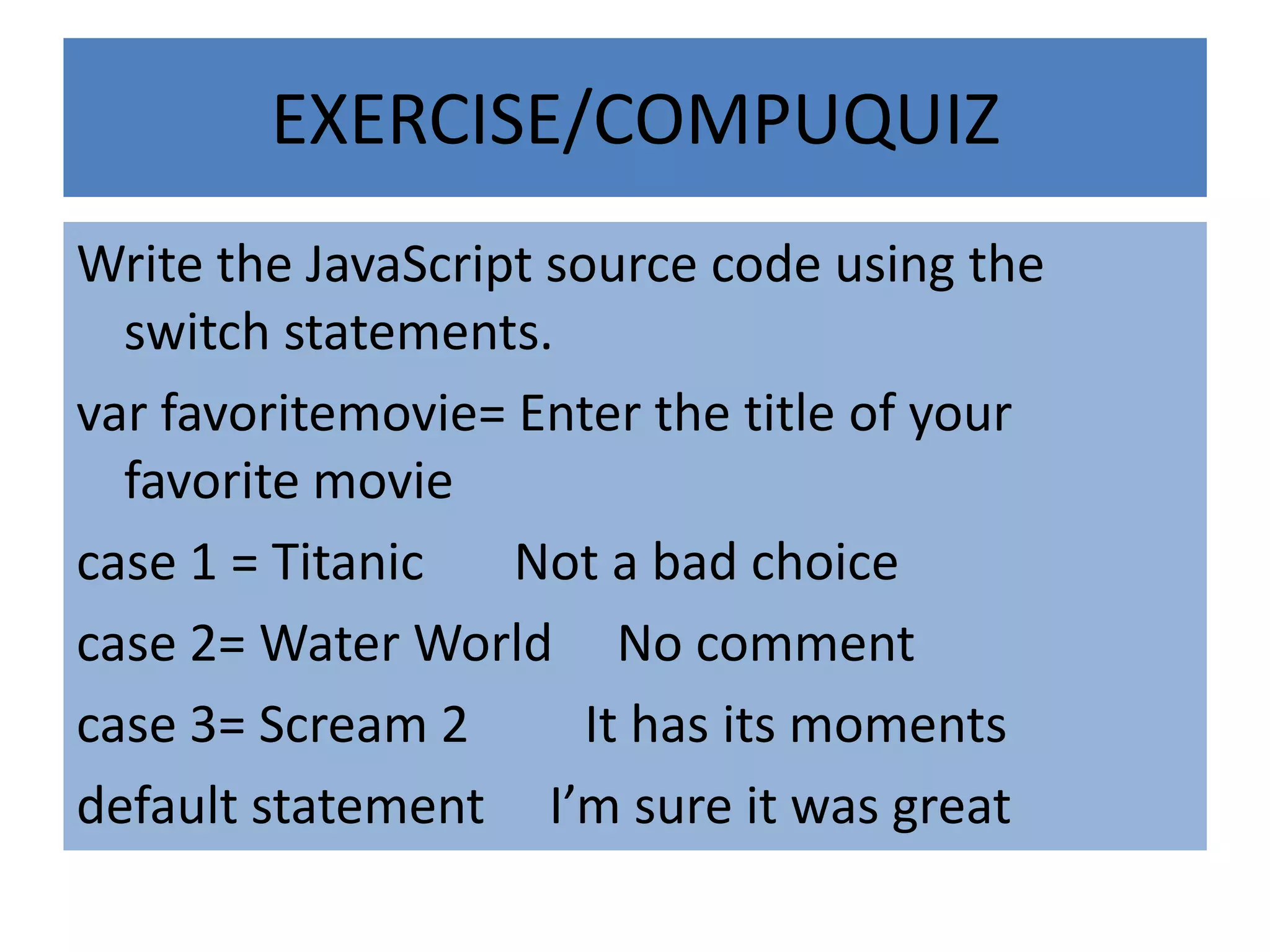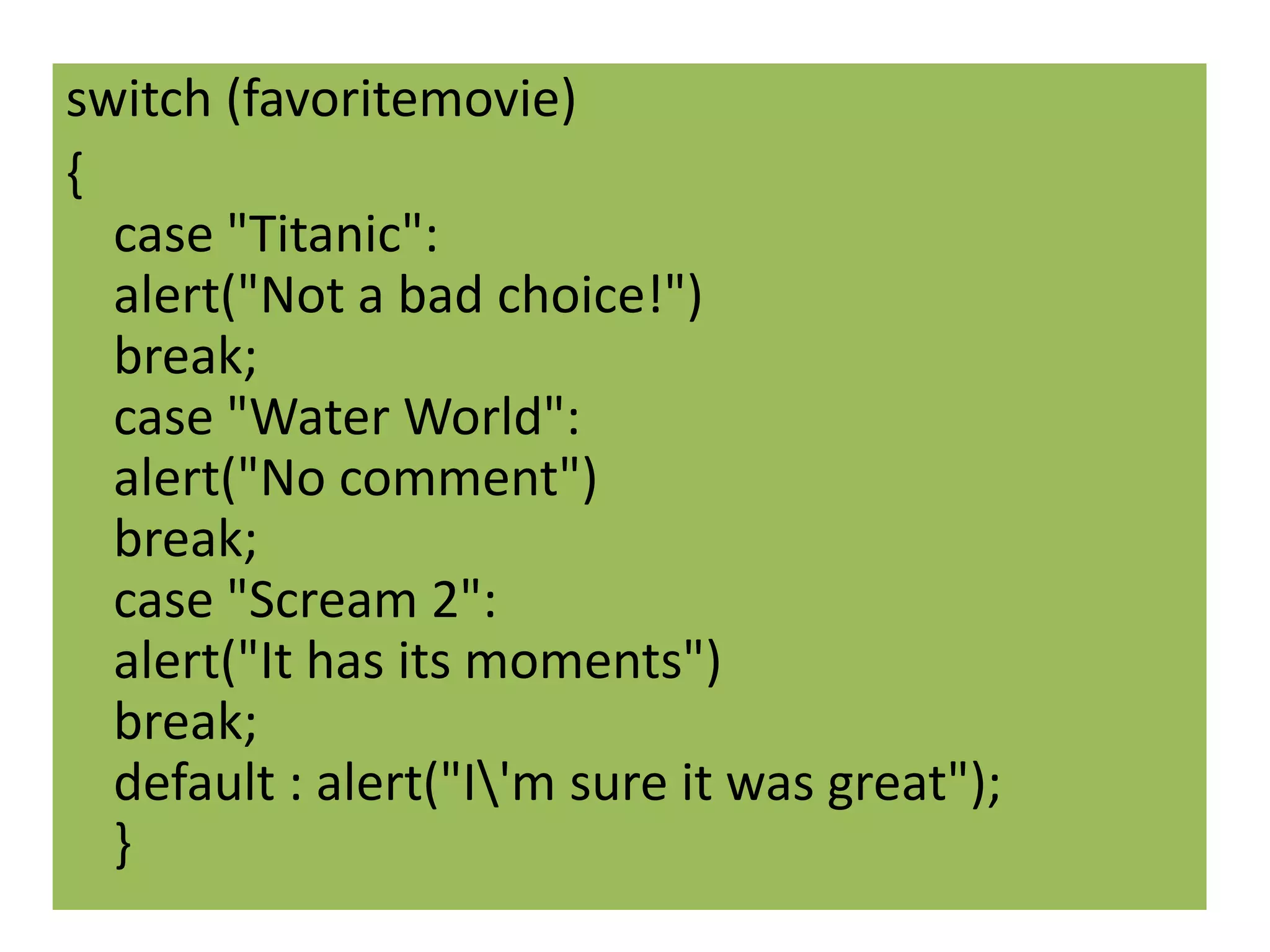The document explains that switch statements are similar to if/else statements but allow checking for multiple values, with each case specifying a value to check for and the code to run if it matches; it provides syntax for switch statements including the switch keyword followed by an expression, cases with values and code to run if a match, and an optional default in case no matches; an example shows using a switch statement to check a user's favorite flower and return different responses based on the match.
